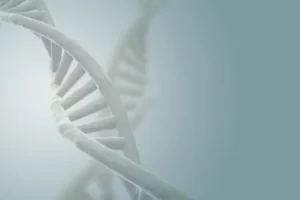
Every child born into this world has a genetic profile inherited from their father and mother. In fact, every gene in our body has exactly two copies – one from our father and the other from our mother.
The question is: what are the relations between these inherited genes? For instance, what happens when the father passes the gene that determines the child’s eyes will be blue, while the mother passes down the gene for brown eyes? This is where the interactions between genes come into play. Today, it is known that there are dominant and recessive genes.
What is dominant inheritance?
When discussing genetic diseases, dominant inheritance means that only one copy of an inherited mutated gene is enough for the disease to manifest.
When a person is a carrier of such a gene, they will develop the disease even if their body contains a second, healthy, copy of the gene. However, they will not necessarily pass down the disease to their children, since there is a fifty percent chance that they will pass on the healthy copy of that gene.
This situation is opposite to that of recessive genes since a recessive gene’s effect is not felt if the other copy of the same gene is healthy. If a person carries a recessive mutated gene and the other copy of the same gene is healthy, the disease will not develop.
However, even in this case there is a fifty percent chance of passing on the mutated copy of the gene to one’s children if the mother also passed on a defected copy of the gene. In this case, the disease will manifest.
What is the definition of “autosomal”?
The term “autosomal” means that the gene responsible for the disease is not located on one of the sex chromosomes (the X or Y chromosomes). Therefore, autosomal diseases will appear in equal prevalence in both males and females. Diseases that are not autosomal are defined as sex-chromosome linked diseases. For example, there are non-autosomal diseases that are x-linked.
If a female inherits one abnormal X chromosome, the other chromosome can compensate the defect. However, if a male inherits the disease, it will manifest since they will not have an extra X chromosome (males have one X chromosome and one Y chromosome, while females have two X chromosomes).
Are people with autosomal dominant disorders born to parents with the disease?
Contrary to logic, more than half the people with autosomal dominant inherited diseases are born to healthy parents. The reasons for this are:
- De novo mutation: certain genetic variants are new defects that occurred in the germ cells (egg or sperm), and thus do not exist in other cells in the mother and father’s body.
- Mosaicism: mosaicism, or mosaic mutation, is a rare condition in which the gene defect only occurs in some of the parent’s germ cells.
- Reduced penetrance: on extremely rare occasions, despite the gene being defined as dominant, there will still be no expression of the disease.
What is unique about this inheritance pattern?
There are three unique elements to autosomal dominant diseases:
- In families with autosomal dominant diseases, the genetic disease will be expressed in different organ systems (for instance, in some patients the disease manifests in the eyes, while others suffer damage to their aorta, with no involvement of the eyes). This is also known as variable expression.
- Diseases with an autosomal dominant inheritance pattern are characterized by a varying level of severity in different members of the family.
- Most of these diseases manifest at relatively advanced ages of life, the severity of the disease correlates to the age at which symptoms appear. The more severe the disease, the earlier an age it will manifest.

